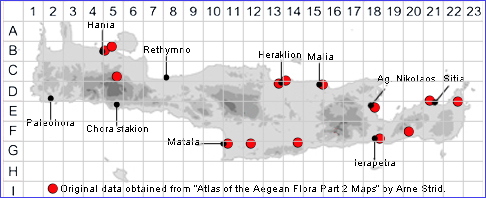
SPECIES DESCRIPTION
SISYMBRIUM IRIO
Family and Genus:- See- CRUCIFERAE
Common Names:- London rocket
Homotypic Synonyms:- Crucifera irio, Descurainia irio, Erysimum irio,
Norta irio.
Meaning:- Sisymbrium (Gr) An ancient Greek name for various plants.
Irio (L) The name in Pliny for a cruciferous plant.
General description:- Herbaceous annual.
Stems:-
1) Up to 60 cm, glabrescent or with long, curved hairs.
Leaves:-
1) Lower, sinuate-pinnatifid, the terminal lobe larger than the laterals.
2) Cauline, lobed or entire and hastate, shortly petiolate.
Flowers:-
1) Inflorescence, condensed, the young siliquae overtopping the flowers and buds.
2) Petals, 2·5-3 5(-6) mm;
3) Pedicels, 3-6 mm in flower, up to 20 mm in fruit.
4) Anthers, c. 0·7 mm.
5) Style, 0·3-0·7 mm.
Fruit:-
1) Siliqua, 25-65 x 0·7-1·2 mm, torulose; septum more or less hyaline.
2) Seeds, 0·7-1·1 mm.
Key features:-
1) At least the lower leaves deeply lobed or divided.
2) Petals, less than 3 mm, shorter than or only slightly exceeding the sepals.
3) Pedicels, 3-6 mm in flower, up to 20 mm in fruit, and much thinner than the
siliqua; rarely more than 0·5 mm diam at the base.
4) Anthers, c. 0·5 - 0·7 mm.
5) Inflorescence, very contracted, the young siliquae distinctly overtopping the
flowers and buds.
Habitat:- Stony and rocky places, field margins, roadsides, wasteground and
coastal habitats, 0-600 m.
Distribution:- Widespread throughout the Mediterranean region and SW Asia.
limited occurrence on Crete, known from a few coastal areas.
Flowering time:- Mid-Mar to early June.
Photos by:- Steve Lenton
